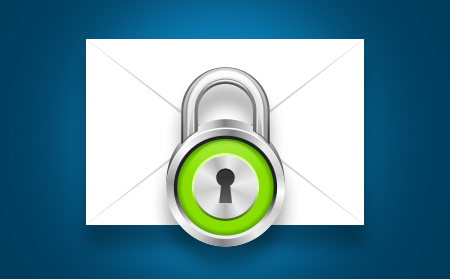Secure Messaging: How to Send Encrypted Email (Gmail & Outlook)
One of the key information protection skills an individual should know is how to send encrypted email. Although most email service providers like Gmail already provide increased information protection through the https protocol, mastering how to send encrypted email provides another layer of security.
This is because a hacker can still intercept a message as it is being delivered to the inbox of the recipient. When one knows how to send encrypted email, the hacker will not be able to read the contents of the message because it is password-protected. They will require a key to decrypt the email.
There are several methods on how to send encrypted email. It depends on whether you are using webmail or you are using an email client an Outlook. We'll talk about increasing your information protection on these mediums by teaching you how to send encrypted email on each of them.

How to Send Encrypted Email for Superior Information Protection in Outlook
Good information protection begins today. If you use Outlook, here are the steps on how to send encrypted email in Outlook.
- Prep for this information protection process in Outlook by clicking on the New Mail button.
- Go to the Options tab next and click on More Options.
- You should see the Security Settings button. Click on it. This is the area where you can manipulate settings for better information protection.
- Choose Encrypt message contents and all attachments. This will encrypt your messages for better information protection.
- Hit OK and then close the tab.
- Write your message and send it as you normally do. You've successfully learned how to send encrypted email.
- If you've never set up a Secure ID, you might be required to do so for better information protection and to be able to encrypt your message. Just go to the File tab, and then hit Options. Go to the Trust Center and choose Trust Center Settings. In Trust Center Settings, go for Email Security and hit Get a Digital ID. You will see a website where you can get your Secure ID. You will receive your Secure ID in your email.
How to Send Encrypted Email in Gmail for Greater Information Protection?
The good news is that Google has already adopted tougher information protection standards. Every message you send inside Gmail is already automatically encrypted. You don't need to learn how to send encrypted email in Gmail. However, you need to make sure you are using Chrome and you are inside Google's email service to avail of this information protection.
Unfortunately there is still a caveat to this information protection measure. Encryption only extends if you are sending your message to another Gmail user. Information protection is dead in the water if you're sending the message to an email address with a different email service. The message loses encryption in transit. If you want to cover your bases, you will need to get your company to host its certificate to Gmail. By doing so, you will be able to avail of Google's hosted S/MIME solution which encrypts all outgoing messages and provides them this layer of information protection while the message is being delivered.
How to Send Encrypted Email for Ironclad Information Protection by Using Third Party Apps
We've mentioned two methods on how to send encrypted email but there's another way. You can use third party service providers or plug-ins. Depending on what browser you are using, there are plug-ins that's all automate how to send encrypted email. There are information protection plug-ins for sending secure email in Chrome and Firefox.
And then there are certificates from information protection authorities like Comodo.
For greater information protection, users can avail of Comodo's Free Email Certificates. The free email certificates guarantee information protection by making sure the emails users send are encrypted beforehand. Since the certificates provide encryption of up to 256 bit security, security is tight.
The sender will also affix their signature on the message to show authenticity. Receivers therefore are assured that the sender is the actual person they're communicating with and not some cybercriminal. When receivers become used to the signature being present, they will become aware if a message from the sender has been faked if there is no signature involved or if the signature looks different.
Comodo’s Free Email Certificate
Aside from providing better information protection and that it's free, Comodo's Secure Email Certificate is easy to install and it will work with major email clients.
Take stock of how you send and receive email. In this day and age, information protection is already a necessity due to the very real dangers of identity theft, hacking, and corporate espionage. When you know how to send encrypted email, you are able to keep your privacy as well as keep your reputation and the trust of your network safe.
Related Resources: